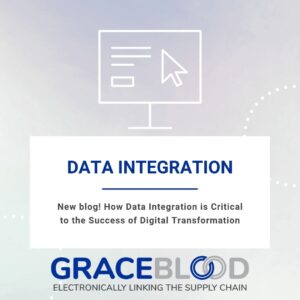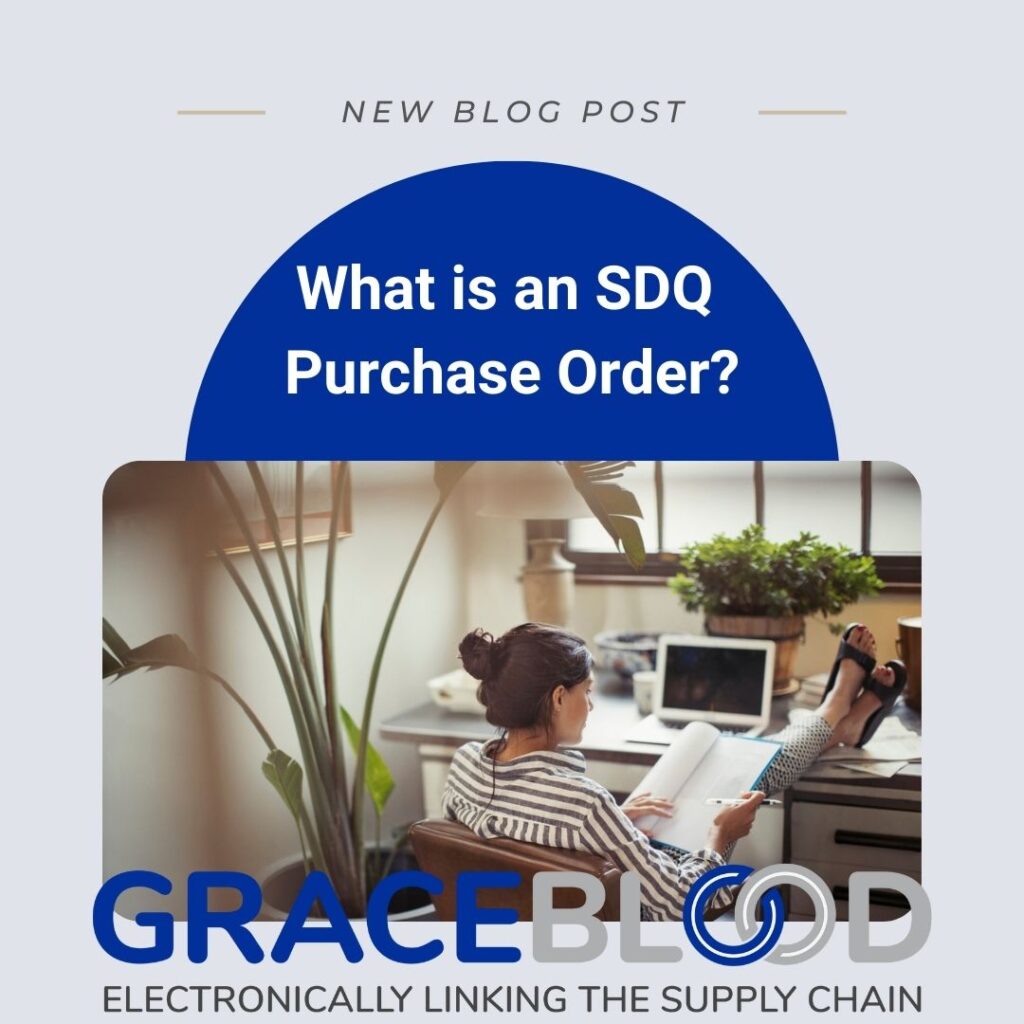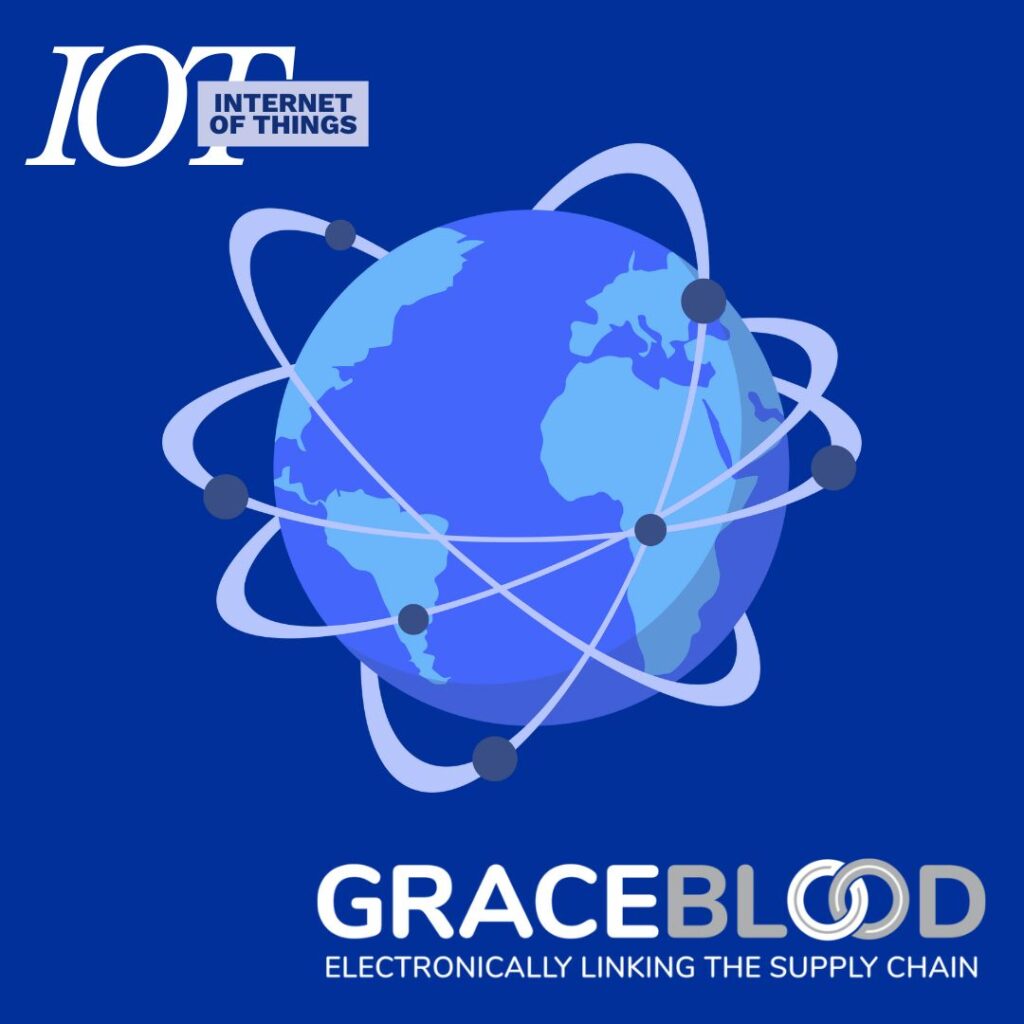
Updated 8/6/25
As evidenced by the 375 million items ordered on Prime Day earlier this year, e-commerce continues to be a driving force in the global economy. If that doesn’t convince you, Thanksgiving weekend, which includes Black Friday and Cyber Monday, is predicted to bring in $37 billion in digital sales this year. There’s no doubt – online shopping has become an integral part of our lives, with consumers expecting convenient, reliable, and swift transactions. Behind the scenes, Electronic Data Interchange (EDI) plays a pivotal role in enabling this seamless e-commerce experience. Acting as a silent backbone, EDI streamlines operations by enabling seamless communication and data flow between e-commerce platforms, suppliers, logistics providers, and other stakeholders.
Modern e-commerce platforms like Shopify and Magento benefit significantly from EDI integrations. By automating and standardizing the exchange of critical business documents such as purchase orders, invoices, and shipping notices, EDI reduces manual intervention, errors, and delays. This article explores EDI’s role in e-commerce, its benefits, integration methods, and why it’s essential for thriving in the competitive online retail space. EDI in e-commerce streamlines operations for businesses while enhancing customer satisfaction. In fact, EDI actually runs in the background of every industry on the planet from supply chain to education and even healthcare.
Table of Contents
- What is EDI and How Does it Power eCommerce?
- Key Benefits of EDI in an eCommerce Business
- How Electronic Data Interchange is Integrated into an eCommerce Store
- EDI vs. API: Choosing the Right Integration for Your eCommerce Strategy
- Common EDI Transactions in eCommerce and What They Mean for the Supply Chain
- Challenges of EDI in eCommerce and How to Overcome Them
- How EDI Systems Support Omnichannel Retail Strategies
- Future Trends: The Future of EDI in eCommerce
What is EDI and How Does it Power eCommerce?
Electronic Data Interchange (EDI) is the standardized electronic exchange of business documents between organizations in a structured, electronic format. Unlike email or other unstructured communication methods, EDI ensures that data is formatted and transmitted in a way that is immediately interpretable by receiving systems.
In the context of e-commerce, EDI is critical for managing key transactions , including:
- Purchase Orders (POs): Streamlined order requests from retailers to suppliers.
- Invoices: Faster, automated invoicing for accurate billing and payment processing.
- Advance Shipping Notices (ASNs): Real-time updates on shipment details to improve supply chain visibility.
By automating these exchanges, EDI eliminates manual processes, reduces errors, and accelerates transaction speeds, which are vital in maintaining a competitive edge myriad types of eCommerce.
Key Benefits of EDI in an eCommerce Business
Efficiency & Accuracy
EDI drastically reduces the need for manual data entry, which minimizes errors and ensures accurate transactions. Automating processes like purchase order generation, invoicing, and shipping notifications frees up time for your team to focus on strategic growth initiatives rather than repetitive tasks. When an online order is placed, EDI systems can automatically transmit the order details to the relevant departments, such as inventory management and fulfillment, reducing the risk of mistakes and ensuring that orders are processed quickly and accurately. In some organizations, the supply chain cycle is triggered from the moment the UPC code is scanned at the register OR items are “added-to-cart” in an online platform.
Real-Time Inventory Management
E-commerce businesses often operate with extensive product catalogs and fluctuating demand (also driven by EDI, incidentally). The EDI process facilitates real-time synchronization between your platform and suppliers, ensuring inventory levels are updated instantaneously. This allows businesses to maintain optimal stock levels, prevent overselling, and quickly replenish popular items. As a result, customers experience fewer instances of out-of-stock products and delayed deliveries. And with the rise of AI and Business Intelligence becoming the new standard, we can now tackle disruptions like those experienced during the pandemic with greater efficiency and speed.
Enhanced Customer Experience
In the world of e-commerce, customer experience is a key differentiator. We can thank Jeff Bezos for that. EDI contributes to this by enabling real-time order tracking and status updates. Customers can receive instant notifications about order confirmations, shipping details, and delivery estimates or confirmations. Additionally, accurate inventory data prevents the frustration of canceled orders due to unavailable stock. This transparency builds trust and satisfaction, leading to repeat business, better vendor scores and positive reviews.
Seamless Communication and Automation with Partners
E-commerce businesses often collaborate with a network of suppliers, manufacturers, and logistics/fulfillment partners. Strong relationships with these partners are crucial for e-commerce success. EDI streamlines communication by enabling real-time, standardized data exchange across your supply chain. This fosters trust, reduces friction, and creates a collaborative environment for meeting customer demands efficiently. Whether it’s sending and receiving purchase orders, invoices, or shipping notifications, EDI ensures that everyone is on the same page, reducing delays and errors in the supply chain.
Compliance and Security
Many industries, especially those dealing with sensitive data like healthcare or finance, have strict compliance requirements. EDI systems are designed with robust security measures to protect sensitive data and ensure compliance with industry standards such as HIPAA, GDPR, and others. Its secure data transmission protocols also protect sensitive business information from breaches. In addition to secure transmission protocols, they often include features like encryption and digital signatures, as we see with AS2 communication. Furthermore, EDI standards and protocols, such as EDIFACT and ANSI X12, ensure compliance with industry regulations and standards, further enhancing data security. However, an EDI partner worth its weight in gold (like GraceBlood ) can efficiently handle any non-standard EDI documents with ease.
Scalability
As your e-commerce business grows, so does the complexity of managing transactions and data flow. Good EDI systems are highly scalable, allowing companies to accommodate increased transaction volumes, onboard new trading partners seamlessly and adapt to evolving business needs without compromising efficiency. This scalability is essential for businesses looking to tap into new markets and opportunities. Don’t get trapped by web-portals or clunky unsupported software platforms – EDI should be nimble and flexible.
How Electronic Data Interchange is Integrated into an eCommerce Store
Seamlessly incorporating EDI into your e-commerce operations involves various digital integration options and technologies. Here’s an overview of common approaches:
EDI Integration Options
- APIs : Direct connections that enable real-time data exchange between your e-commerce platform, internal systems enterprise resource planning system (ERP systems) and trading partners. APIs offer flexibility and are often used for custom integrations.
- Middleware: Software tools such a EDI translators act as a bridge between your e-commerce platform and trading partner systems, translating data formats for compatibility.
- Direct Platform Integrations: Pre-built connectors for platforms like Shopify or WooCommerce that simplify integration by eliminating the need for custom development.
Automated Data Exchange
EDI facilitates the automated transfer of critical business data such as invoices, orders, and inventory updates. This eliminates manual intervention, reduces errors, and accelerates the exchange of these electronic documents, ensuring smooth business process operations across the supply chain.
Third-Party EDI Providers
For businesses looking for a plug-and-play solution, third-party EDI providers offer pre-configured integrations with popular e-commerce platforms. Providers like GraceBlood specialize in fully managed EDI via our VelociLink™ platform , ensuring compliance, and offering robust customer support to address any issues.
Real-Time Synchronization
One of EDI’s standout features is its ability to synchronize data in real-time. For instance, when a business partner places an order, EDI ensures that inventory levels, order statuses, and shipping information are updated instantaneously. This transparency enhances operational efficiency and builds customer trust.
EDI vs. API: Choosing the Right Integration for Your eCommerce Strategy
While EDI is often seen as a legacy technology, it remains the gold standard for document exchange due to its standardization, reliability, and compliance-ready nature. However, with the rise of modern APIs, many e-commerce businesses wonder whether they should replace EDI entirely.
The reality? EDI and API are not mutually exclusive. In fact, the most agile businesses leverage both.
EDI excels at handling batch-oriented, structured data exchange that conforms to established standards like ANSI X12 or EDIFACT. It’s ideal for high-volume, recurring transactions that must meet strict EDI compliance and auditability requirements—think purchase orders, invoices, and shipping notices.
APIs, on the other hand, provide real-time communication and flexibility, making them perfect for use cases like retrieving product data, tracking shipments on demand, or connecting with custom-built apps.
In modern e-commerce environments, hybrid models are common—using EDI for backend supply chain communications and APIs for frontend customer experience enhancements. The key is knowing when to use which, and how to make them work together seamlessly.
Common EDI Transactions in eCommerce and What They Mean for the Supply Chain
EDI may be “invisible” to most, but it’s quietly powering millions of e-commerce transactions behind the scenes. Here are some of the most common EDI format transaction sets you’ll find in online retail—and what each one does:
- EDI 850 – Purchase Order: This is the document a retailer sends to a supplier to initiate a purchase. It includes item numbers, quantities, prices, and delivery details.
- EDI 855 – Purchase Order Acknowledgment: Used to confirm receipt and acceptance of the purchase order, sometimes with modifications or shipping estimates.
- EDI 856 – Advance Ship Notice (ASN): A critical document for inventory and fulfillment, this provides detailed info about an incoming shipment—items, packaging, carrier details, and expected delivery.
- EDI 810 – Invoice: Sent by the supplier to request payment. It mirrors the purchase order and ASN for accurate reconciliation.
- EDI 846 – Inventory Inquiry/Advice: Used to provide real-time inventory levels, ensuring that e-commerce platforms display accurate stock availability.
Understanding these documents is key to mastering the flow of goods and information that keeps e-commerce engines running.
Challenges of EDI in eCommerce—and How to Overcome Them
Despite its strengths, implementing EDI in e-commerce isn’t always plug-and-play. Many businesses face challenges like:
- Partner Onboarding Delays: Connecting with new suppliers or marketplaces can be slow due to differing EDI standards or requirements.
- Handling Non-Standard Data: Not all trading partners use EDI the same way. Some use custom formats, others still rely on email or web EDI portals.
- Poor Visibility into Transactions: Without real-time dashboards or alerts, failed transactions can go unnoticed until it’s too late.
- Legacy System Compatibility: Older ERP or order management systems may not support modern EDI tools or automation features.
The good news? These issues can be resolved with a managed EDI service provider like GraceBlood. By offering full-service onboarding, exception handling, format translation, and platform integrations, these providers eliminate the friction and let your team focus on growth.
How EDI Systems Support Omnichannel Retail Strategies
Omnichannel isn’t just a buzzword—it’s the expectation. Today’s customers shop across multiple channels: desktop, mobile, social media, and in-store. Behind the scenes, this creates a logistical challenge: how do you maintain a unified experience and consistent data flow?
That’s where EDI comes in.

By integrating with inventory, order management, fulfillment, and shipping systems, EDI ensures the smooth transmission of documents between channels. For example:
- A product bought online can be fulfilled from the nearest warehouse.
- A return initiated in-store can update online inventory instantly.
- Promotions or bundle pricing can be applied across platforms without errors.
EDI helps centralize data and synchronize systems so your customers receive a seamless experience—no matter where or how they shop.
Future Trends: The Evolution of EDI in eCommerce
EDI has been around for decades, but it’s far from outdated and traditional EDI software is becoming a thing of the past.
In fact, EDI is evolving to meet the demands of modern commerce, driven by technologies like:
- Artificial Intelligence & Machine Learning: Predictive analytics can anticipate stockouts or delays based on historical EDI data, enabling proactive decision-making.
- Blockchain: Immutable transaction records could enhance trust and traceability across the e-commerce supply chain.
- Cloud EDI Platforms: Cloud-native solutions offer scalability, uptime, and speed that traditional on-premises EDI systems can’t match.
- API-EDI Hybrids: These solutions combine the stability of EDI with the real-time flexibility of APIs, providing the best of both worlds.
As customer expectations increase and supply chains become more complex, EDI will continue to play a central role—quietly evolving to meet new challenges while remaining the invisible force powering e-commerce.
Why EDI is Essential for Modern E-Commerce
In today’s competitive e-commerce landscape, businesses must adopt technologies that enhance efficiency, scalability, and customer satisfaction. EDI achieves these goals by:
- Automating complex transactions and reducing errors.
- Enabling seamless communication between stakeholders.
- Ensuring compliance with industry regulations.
- Providing a scalable framework for business growth.
For businesses looking to streamline operations and scale efficiently, EDI is an invaluable tool. Providers like GraceBlood offer tailored direct EDI solutions that integrate seamlessly with your e-commerce platform. This automation enables you to focus on delivering exceptional customer experiences while optimizing backend operations. Speak to one of our experts today.








